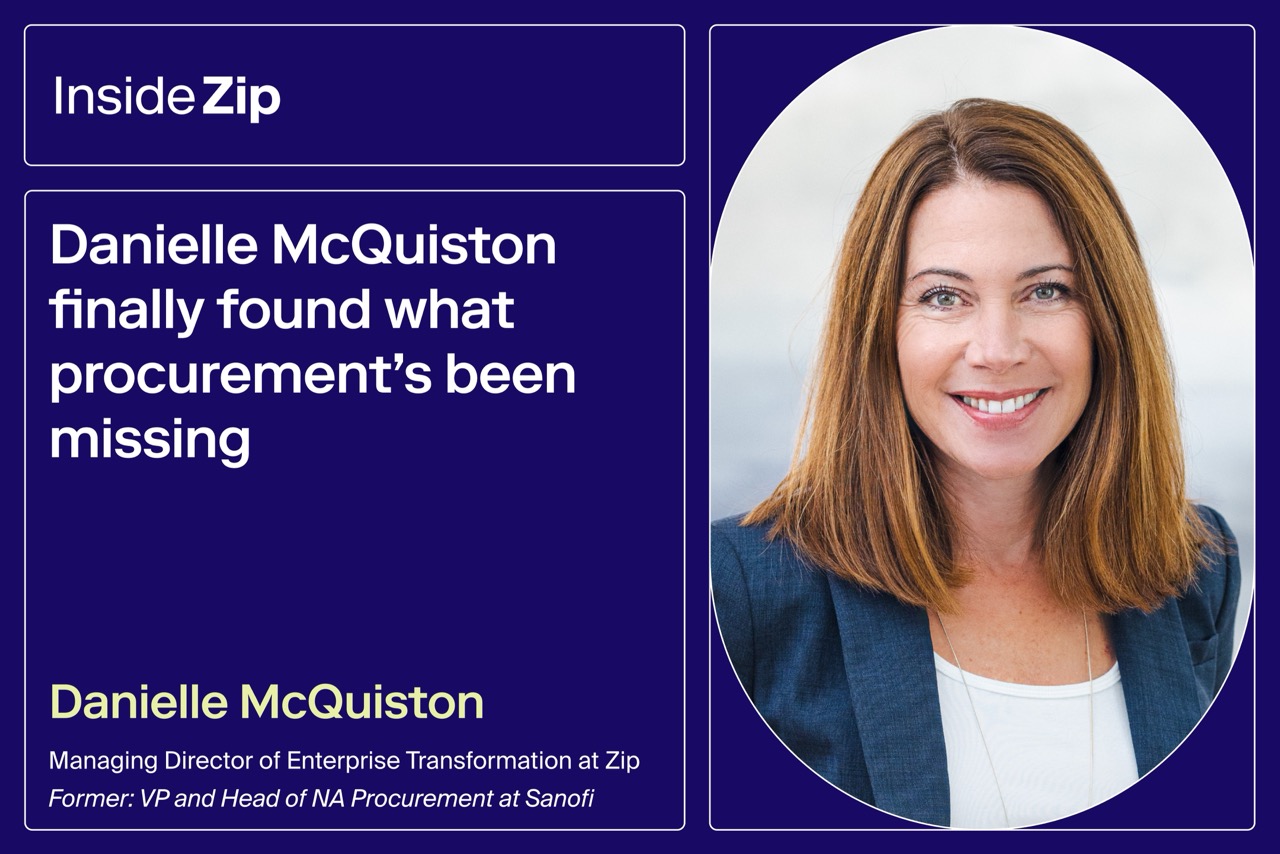.avif)
Spend control: Ensure capital deployments are optimized
Discover the most effective spend control strategies for today's businesses.

With the global economy facing uncertainty and businesses struggling to stay afloat, keeping a close eye on expenses has never been more crucial.
Whether a small restaurant business or an international corporation, managing a budget is critical to the success of any business. Spending controls can help you to not only better manage your finances but also potentially save costs in the long-run while still enabling you to make necessary purchases.
This article provides an in-depth exploration of the best and most effective spend control strategies available for today’s businesses, allowing them to streamline their processes for tracking expenditures, create and stick to budgets, reduce costs where possible, and obtain the most value from their investments. These practices will prove invaluable for any organization hoping to stay financially sound amidst both predictable and unpredictable market conditions.
What is Spend Control?
Money is the lifeblood of any business, and having good spend control is essential to ensuring that every dollar counts. Spend control, also known as spend management, is a strategy used by organizations to ensure their capital deployments are optimized. It takes the guesswork out of budgeting, offering companies real-time transparency into how resources are being used.
To implement this process, policies, practices, and tools must be established to monitor and manage purchases both fixed and variable in cost. These policies hinge on financial data to give visibility into expenses in real-time so that companies understand where their money is being allocated. This visibility includes understanding who is authorized to spend capital, how spending is tracked, how much money stakeholders can spend, what approval processes are in place for spending requests, and how budgets are allocated to stakeholder and departments.
But without good visibility into your expenses, it's impossible to achieve great spend control. You need to know where your money is going, who's spending it, and whether it's being used in the most efficient way possible. That's why spend control is crucial. By monitoring and managing purchasing across the business, you can reduce unnecessary expenses, maximize operational efficiency, and direct more cash into activities that drive growth.
Having good spend control touches more than just cutting back; it also ensures every dollar counts. Through strict guidelines and processes across the organization that generate compliance with rules on expenditure, they can guard their valuable cash while attaining realistic financial forecasts which result in better business outcomes.
Why is Spend Control Important?
Imagine you run a business, and you have a constant flow of money coming in and going out. Your sales revenue is high, but your expenses are also increasing, and you're not quite sure where all the money is going. You may be experiencing what many businesses face: a lack of spend control.
Ensuring proper spend control is an important factor for businesses of all sizes. Businesses need to take steps to ensure that their expenses are monitored and managed in a way that allows them to remain profitable and successful. Here are five reasons why it's important:
- First, spend control helps businesses set budgets. Knowing how much is being spent on what can help businesses create realistic budgets and make strategic decisions when it comes to allocating resources.
- Second, it enables businesses to plan ahead. Monitor spending so they can accurately forecast future costs and prepare for any potential bumps in the road along the way.
- Third, spend control helps businesses track expenses. Tracking expenses gives businesses an insight into where money is being spent, helping them identify where changes should be made or areas where savings could be made in order to increase profitability.
- Fourth, spend control encourages smarter decision making when purchasing goods or services–understanding which products offer the best value based on price versus quality can benefit business’s bottom lines over time by encouraging smarter buying decisions.
- Finally, mastering spend control brings peace of mind–having accurate records of where money is being spent keeps employees from worrying about overspending and unexpected costs cropping up at the wrong moment.
Adopting effective spend control measures sets businesses up for long-term success and boosts overall efficiency as well as its competitiveness in the marketplace.
Spend Control vs Cost Control
Spend control and cost control are both important elements of financial management. But they serve different purposes. Spend control focuses on reducing overall expenses, while cost control attempts to ensure that each expenditure is necessary, economical, and produces value. Both strategies have their own merits, but together they create an efficient system of fiscal monitoring that maximizes the organization’s potential for saving money while still investing in crucial resources and assets.
Spend control concentrates on what kind of purchases businesses make and how much money is allocated for those items. It looks at risks versus rewards of spending decisions, seeking to reduce the budget by limiting or relocating funds when possible. Cost control aims to keep costs at the lowest level possible by monitoring employee productivity and operational processes. This process includes utilizing accounting tools to track expenses along with other techniques such as adopting a standard operating procedure or procurement policies that provide economic advantages like discounts or bulk-buying offers from vendors.
It's essential to understand the difference between spend control versus cost control in order to effectively manage your resources. As part of an effective financial strategy, businesses should strive to implement both principles simultaneously; they complement one another in creating profitable results within any organization. Utilizing them correctly will ensure greater overall savings and improved value for money spent on products and services, ultimately leading to a wealth of success for your business.
Spend Control Best Practices
An effective approach to controlling spend for a business involves creating corporate budgets, refining procurement processes, and monitoring financials on an ongoing basis. Below are seven best practices that businesses can implement in order to establish better financial control:
Establish Clear Budget Guidelines
It is integral that businesses create a comprehensive budget that outlines all planned spending for the company for any given period of time. This process will provide a defined structure to make decisions regarding how much the business is willing to spend and will help direct funds properly across departments. Following these budget guidelines is paramount in establishing spending controls.
Retrain Procurement Staff
Businesses should ensure that purchasing decisions are rational and well-informed by providing refresher training to procurement staff whenever necessary. They should regularly review policies and procedures with employees, empowering them with the knowledge needed to make sound buying decisions on behalf of their company.
Utilize Purchase Orders (PO’s)
All purchases made by the organization should be monitored through purchase orders (PO’s). Using PO’s allows companies to track their spending in real-time so they have complete visibility into any costs associated with a certain product or service. Additionally, having written agreements attached to PO’s also limits any potential rogue spending from taking place without authority from management.
Leverage Digitization
In today’s digital world, businesses can benefit greatly from utilizing online systems such as accounting and invoice software which can streamline processes and provide advanced insights into financial data across multiple channels. Digital technology can replace paper billing documents with invoices that are sent electronically, forcing people within organizations to respond more speedily which helps reduce delays in payment processing times due to manual processes.
Manage Cash Flow Closely
Companies should use modern reporting techniques such as cash flow forecasting so they know exactly how their money is moving throughout the organization at any given moment–this provides insight into when funds are coming in and when those same funds need to be allocated for various expenses outside the business or investments within it. Having up-to-date information about cash flow enables businesses owners and managers to forecast future expenses before money is actually spent.
Implement Independent Reviews
It is beneficial for companies to take advantage of independent reviews like internal audits via third parties at least twice each year because this provides valuable feedback regarding areas in need of improvement financially as well external compliance standards continually need adhering too. This process essentially creates an ongoing process of checks and balances across departments which helps companies stay on top of their finances while increasing overall efficiency as a result.
Set Limits/Create Policies
As human beings we have a tendency towards impulse buying; this same logic applies even more so within corporate settings where large amounts of money go spent quickly if not kept off check appropriately. To mitigate this, companies should set spending thresholds organized by department and C-level personnel where authorization needs additional signoff before proceeding with purchase orders over certain dollar values; Additionally, updated policies pertaining regular reviews & authorizations on all output & input expenditures act as further deterrents from overspending or worse misappropriation of funds altogether . Incorporating these restrictive measures ensures tighter controls placed upon finances remain intact throughout your organization's buying cycles long term.
Benefits of Spend Control
Spend control is the practice of monitoring and managing business expenses while staying within allocated budget limits. Benefits of spend control include improved efficiency in financial management, greater accuracy in tracking details and data, increased profitability by reducing wasted resources, increased cash flow as well as avoidance of potential problems due to overspending.
Better Financial Management
Improved financial management efficiency is achieved when managers are able to access up-to-date information in a straightforward fashion through the use of technology. This ability can reduce manual processes and the amount of time it takes to create budgets or complete other essential tasks. Additionally, employees can be quickly informed on relevant changes in real time–enabling fast responses to any arising issues.
More Accuracy
With spend control, businesses can also enjoy greater accuracy with their spending records since clear and detailed reports about expenses can be obtained rather quickly. As a result, company leadership has better visibility into all spending which helps when making data driven decisions that are financially sound and potentially profitable for the organization.
Reduced Waste
The third benefit of spend control involves the decrease in wasted resources that comes from inefficient financial management practices like missing receipts or lost invoices. This feature often includes reconciliation tools that allow for double checking if a spent amount matches what was initially intended–saving both time and money for a business in the process.
Better Cash Flow
Spend control positively impacts cash flow by providing effortless reminders regarding important payments and automated budgeting capabilities geared towards avoiding any possible short falls or bankruptcies. As long as these systems are regularly updated according to current market trends or circumstances - companies can generally remain secure knowing they will have enough money on hand at all times to cover their obligations.
Identify Issues
Potential problems associated with overspending such as budget overruns or unnecessary transactions can be avoided with thorough oversight provided through modern technology solutions like cloud computing or artificial intelligence. With up-front reviews combined with real time updates available across multiple platforms during normal business hours–any malicious intent by bad actors can potentially be discovered before it undeniably causes further harm from any misappropriated funds being used outside of its intended purpose.
Benefits by Role
Once spend control is implemented, there are several changes that can be observed across the organization. Here is a snapshot of what effective spend control looks like for each role/function within a company:
CFO
For the CFO, effective spend control means having full financial visibility and access to timely reports. Tools like budget tracking provide a clear picture of spending patterns, liabilities and balances across departments, highlighting areas of overspend or risk. The CFO has the power to monitor performance and allocate funds for new projects with confidence.
CEO
For the CEO, effective spend control involves setting clear policy guidelines and governance structures that empower departments to enable better monitoring techniques. Automation features can be used to enforce regulations throughout the organization so that all decisions meet predefined benchmarks. This ability allows the CEO to trust their teams are making decisions responsibly while ensuring compliance across company boundaries.
Finance Teams
For finance teams, effective spend control means providing management with accurate and real-time spending data. With tools such as approval workflow automation in place, finance teams can ensure regulatory protocols are being followed correctly and continuously monitored to identify signs of fraud or misuse of assets. These processes also support decision-making for investments as teams are able to quickly analyze current financial health at any time.
Procurement Teams
For procurement teams, effective spend control means managing their supply chain more effectively by evaluating supplier performance and implementing approval routings that allow resource optimizations such as automated dual sign offs on orders outside established budgets. Additionally, they can generate analysis reports based on invoice histories which help inform better strategies going forward while supporting negotiations with vendors that increase organization's ROI in purchases.
Company Wide
Company wide, effective spend control reflects well on an organization's practical financial capabilities while also reinforcing its commitment towards fiscal responsibility–both of which create an environment organizations can build upon for sustainable success over time by increasing transparency throughout the entire operations cycle as well as encouraging a culture of accountability amongst its members.
Spend Control with Zip
Zip is a spend management platform that helps teams control their procurement spend and streamline their operations. With real-time visibility into your purchase and vendor request pipeline, Zip ensures that all purchases follow the correct approval flows and reduces the number of redundant vendors.
Zip liberates finance and procurement teams from manually tracking cross-functional approvals. It eliminates the need to shepherd approvals across finance, security, legal, and other teams, providing full visibility to the requester. This ability allows procurement to focus on higher-leverage tasks, such as sourcing, in order to drive savings.
With an intelligent, intuitive front-end that sits on top of your ERP or procure-to-pay system, Zip requires no training for users to initiate or approve requests. It automatically creates purchase requisitions or purchase orders at the right time and grants the requestor visibility into the open PO amount and PO number without ever needing a license to your ERP or P2P system.
Zip helps teams achieve spend control and streamline their procurement operations, making it the ideal solution for companies looking to optimize their spend control. If you want to see how Zip can help your team, book a demo today.

Maximize the ROI of your business spend

Enter your business email to keep reading



























.webp)

































.avif)










.webp)





.avif)












.avif)
